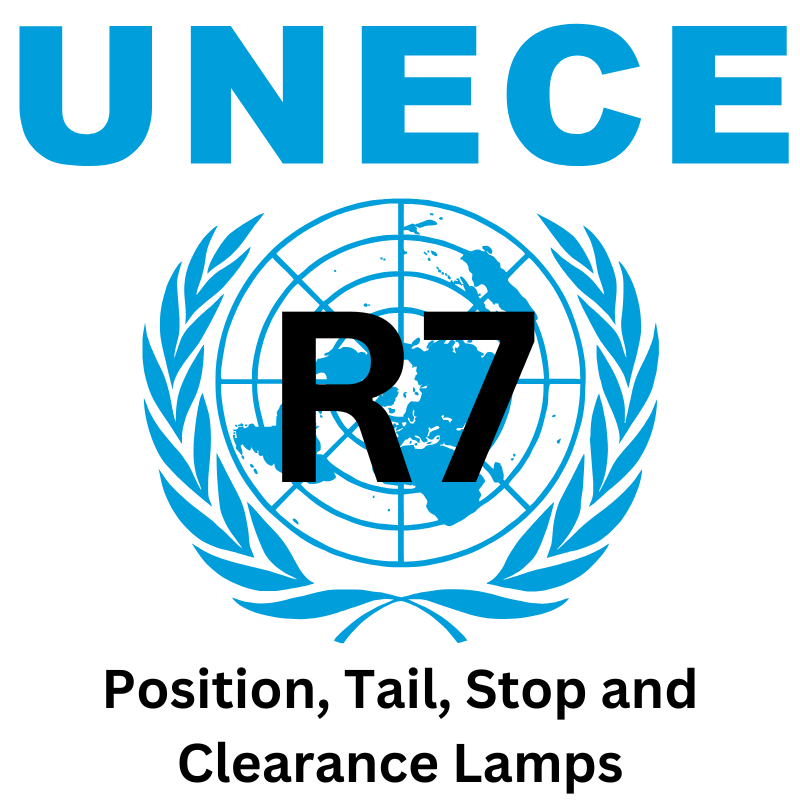Guide To: UNECE R7 - Position, Tail, Stop and Clearance Lamps
05 July 2018

Guide To: UNECE R7 - Position, Tail, Stop and Clearance Lamps
UN ECE Regulation No. 7 defines the uniform provisions for the approval of front and rear position lamps, stop lamps, and end-outline marker lamps for motor vehicles and their trailers. These lighting devices are crucial for vehicle visibility and safety, helping to signal the vehicle’s presence and actions, particularly in low-visibility conditions such as night driving or adverse weather.
Scope of the Regulation
UN ECE R7 applies to:
- Front and rear position lamps: Used to indicate the presence and width of the vehicle when viewed from the front or rear.
- Stop lamps: Indicate to other road users that the vehicle is braking.
- End-outline marker lamps: Fitted to the outer edges of vehicles to clearly indicate the overall width, especially for large vehicles like trucks and trailers.
Key Features of UN ECE R7
Design and Construction:
- These lamps must be designed to function reliably under normal vehicle operating conditions. Their construction must allow for uniform illumination, ensuring visibility from a range of angles.
- Stop lamps may be activated not only by the braking system but also by other devices such as retarders.
Photometric Requirements:
- The regulation specifies the minimum and maximum luminous intensities for these lamps to ensure that they are visible without causing glare to other road users.
- The lamps must emit light within specific colour ranges: white for front position lamps and red for rear position lamps and stop lamps.
Marking and Approval:
- Each lamp must bear an approval mark, which includes the manufacturer’s trade name or mark, and a unique approval number issued by the regulatory body.
- The approval mark confirms that the lamp has been tested and meets the required standards for safety and performance.
Intensity Control:
- Certain stop lamps and position lamps are allowed to have variable luminous intensity, which can be adjusted based on environmental conditions (e.g., day vs. night) to avoid excessive brightness.
Incorporation into UN ECE R148
UN ECE R7 has been incorporated into UN ECE Regulation No. 148, which consolidates several lighting-related regulations into one framework. R148 simplifies the approval process by unifying various light-signalling devices, including front and rear position lamps, stop lamps, and end-outline marker lamps. The integration into R148 supports global standardization while maintaining the safety and performance standards originally outlined in R7.
Conclusion
Compliance with UN ECE R7 (now integrated into R148) ensures that vehicle position, stop, and marker lamps meet international standards for safety, visibility, and reliability. This regulation, now part of the streamlined R148 framework, helps vehicle manufacturers, suppliers, and trade customers maintain adherence to modern road safety standards.
Guides to ECE Regulations,E-Mark,ECE Regulation 7,Front Marker Lights,Outline Marker Lights,Position Lights,Rear Marker Lights,Brake Lights,Stop Lights,